Reconstructing Health from Osteological Indicators
A number of skeletal indicators are used by bioarchaeologists to reconstruct patterns of health and disease associated with agricultural transitions. These include linear enamel hypoplasia, porotic hyperosto-sis/cribra orbitalia, periosteal lesions, juvenile and adult stature, and mortality patterns. Linear enamel hypoplasia refers to depressed bands that form in tooth enamel when childhood growth is disrupted by nutritional insufficiency, infectious disease, or other significant stressors that interrupt the metabolic process (Figure 3). These dental markers serve as a general indicator of health during infancy and childhood. Porotic hyperostosis refers to porous lesions of the cranial vault and eye orbits (cribra orbitalia) that form in response to iron deficiency anemia, although in recent years palaeopathological research has demonstrated a link between porous cranial lesions and scurvy (Figure 4). These lesions also tend to form in childhood due to dietary deficiencies or blood loss
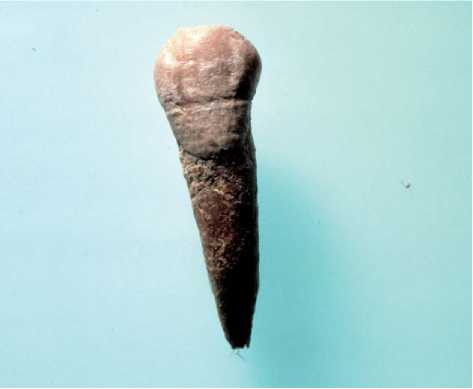
Figure 3 Enamel hypoplasia in a maxillary canine tooth. Photo credit: Korri D. Turner, Soil Systems, Inc.
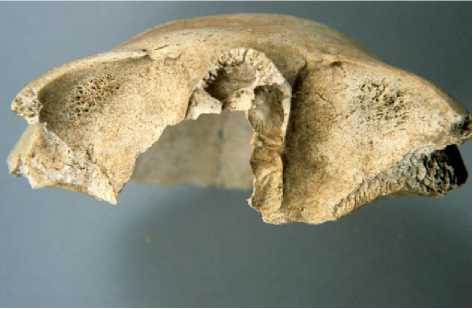
Figure 4 Cribra orbitalia.
Due to parasites and bacterial infection, and thus provide another but more specific indicator of childhood health experience. Periosteal lesions (Figure 5) are plaques of bone that form on external (cortical) bone surfaces when the connective tissue that covers bone (the periosteum) becomes separated from the cortex due to various biological processes. Although there are numerous conditions that can cause these lesions (e. g., trauma, scurvy, vascular disease), bacterial infection is among the more prominent, and periosteal lesions therefore tend to be viewed (albeit not quite correctly) as a proxy measure of infectious disease experience. In combination, these lesions provide a reasonably good measure of childhood stress levels, particularly when used in a comparative framework. Periosteal lesions can also provide information on the disease and injury experiences of adults.
Stature estimates based on long bone measurements and mortality patterns based on age distributions of cemetery samples have also been used to
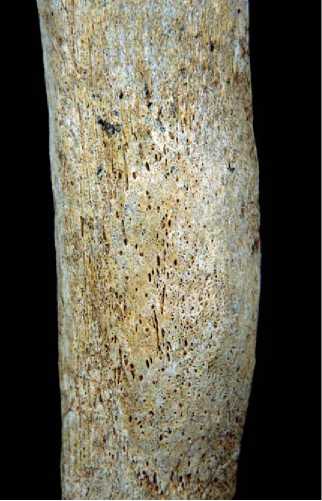
Figure 5 Periosteal lesion on the midshaft of a tibia.
Assess health status of individuals and populations at economic transitions. People who experience poor nutrition and ill health during the growth years do not achieve their genetic height potential, and adult stature can therefore provide a good measure of cumulative health experience during the growth years. Growth curves for juveniles have also been used to characterize subadult health, but can be difficult to interpret for cemetery samples. This is because the curve is necessarily based on the measurements of children who died at a particular age rather than all the children of that age in the living population, and therefore reflects the stature of the least healthy members of each age group. Ratios of subadults (especially, infants and young children) to adults in cemetery samples can provide information on age-based differences in mortality and offer insights into patterns of morbidity in a population. However, there are a number of challenges to reconstructing mortality profiles from death assemblages that are discussed below.
Almost everywhere in both New and Old World contexts, the osteological indicators described above provide a cumulative picture suggesting greater decline than improvement in health with agriculture, although this difference is often most evident in comparisons of foragers and full-scale, sedentary agriculturalists. Health changes associated with the actual transition period are much more variable due to differences in how quickly the transition took place, how much the agricultural diet differed from that of earlier foragers, and the degree to which demographic factors such as sedentism and growth rate altered wIth the introduction of agricultural production.
The general pattern of health decline observed in many settings has led to the conclusion that disease risk increased with agriculture, and there are certainly reasons to believe this might be so. When people begin to grow their food, they become tethered to a particular place in a way that foragers are not. Sedent-ism increases disease exposure through accumulation of food refuse and human waste, both sources of parasitic and bacterial infection. These accumulations also attract vermin such as rats, known to carry bubonic plague, hantavirus, typhus, rabies, and other diseases transmissible to humans. In tropical environments, clearing of agricultural fields or construction of irrigation systems can create breeding grounds for mosquitos and the infections such as malaria and West Nile virus they can transmit. Such health problems were apparently created in ancient Bahrain with the transition from nonirrigating to irrigation agriculture. In addition, agricultural populations often rely heavily on storable staple foods such as corn and wheat that do not contain the range of vitamins and minerals available from the mixed diet of most foragers, potentially rendering agriculturalists more susceptible to pathogens as a result of poor nutrition. Food storage itself can also lead to increased problems with gut infection due to spoilage from bacteria and molds.
There are, however, also health advantages of an agricultural economy. The production of surplus, storable foods can reduce the impact of lean periods that for foragers may lead to malnutrition and death. This may account for the lack of stature decline, or in some cases even an increase in stature, documented in some regions of the southeastern United States and elsewhere with agriculture. Surplus food can also permit incapacitated members of a society that cannot contribute to subsistence efforts due to sickness, injury, or old age to survive where they might not in a mobile society. In addition, the injured and ill need not be mobile to survive, but can rest and regain strength. Food production also permits shorter birth spacing, resulting in increasing fertility rates and therefore relatively more children each generation.
Some researchers question whether the health risks among prehistoric agriculturalists were actually greater than their foraging antecedents, despite osteo-logical evidence suggesting that this was the case. For example, age distributions of agriculturalist samples frequently show a higher ratio of infants and young children to adults, a pattern interpreted to reflect an increase in infant mortality and a decrease in life expectancy at birth. However, it has become clear that, while age distributions can provide a good measure of fertility, they are a poor measure of mortality. This is because changes in birthrate have a much greater impact on demographic profiles than changes in death rate. Fortunately, alternative methods have been developed to derive more accurate estimates of fertility and mortality from archaeological cemetery samples. One method designed to eliminate problems associated with the underenumeration of infants and inaccurate estimation of age in older skeletons uses the proportion of individuals over 30 years to the proportion of individuals over >5 years to estimate fertility. Another method uses birth rates calculated from age distributions of skeletal samples and growth rates based on settlement data to estimate fertility and mortality. Estimates based on these revised methods suggest that early American horticulturalists experienced an increase in both fertility and mortality rates relative to contemporaneous foragers. However, similarly high rates appear to have been experienced by both foragers and farmers living in the Americas between about 1500 and 500 years ago (when most groups made the transition to sedentary agriculture), and it has been argued that population growth and high mortality may have been the impetus for agriculture rather than a consequence of it.
Increasing morbidity also appears to generally characterize the transition to agriculture, but some scholars have argued that this too is a product of changing patterns of infant survivorship. In foraging societies, it is hypothesized that at-risk infants may not survive infancy due to limiting factors such as the need for greater birth spacing and annually occurring lean periods, and thus be eliminated from the population before developing any skeletal record of ill health. Survivors in these societies are therefore the healthiest born and would be expected to fare better in life. On the other hand, if at-risk infants in agricultural societies survive due to better provisioning and stability, they may nonetheless suffer the consequences of greater frailty. These survivors thus may develop the signs of ill health that osteologists use to reconstruct patterns of health and disease. Agricultural skeletal samples would thus look sicker because they include sickly survivors, whereas foragers would look healthier because susceptible infants died before they could develop these signs. However, although these problems (the osteological paradox) introduce challenges to estimating life expectancy and mortality accurately, skeletal samples nonetheless provide a record of disease experience for those who did survive. In this sense, agriculturalists generally show more signs of ill health and disease than their forager antecedents (or contemporaries), and illness thus appears to have been a more prominent aspect of everyday life in these societies.
Infectious Disease
The skeleton provides only a very limited picture of infectious disease experience with the transition to agriculture. This is because most diseases do not affect the bones and those that do tend to affect them in nonspecific ways. However, what evidence there is suggests that infectious disease generally increased when people made the shift from foraging to farming. We can see this pattern most clearly in the changing prevalence of two chronic infectious diseases that commonly affect the skeleton in distinctive and therefore identifiable ways: treponemal disease and tuberculosis (TB). Treponemal disease, a bacterial infection that affects the bones in some (reports vary from 1 to 50+%) cases, tends to result in periosteal lesions of the long bones (especially, the tibias; Figure 6) and destructive lesions of the cranial vault (caries sicca) and nasal region. TB, a mycobacterial infection, may stimulate periosteal lesions of visceral (internal) rib surfaces in pulmonary TB and tends to affect the vertebrae, hips, and knees with destructive lesions in the skeletal form of the disease (Figure 7). Though neither disease causes bone lesions in all or even most cases, knowledge of the likelihood of bone lesions in each disease can facilitate a more accurate estimation of morbidity levels in the population. Emerging studies of pathogen DNA will likely enhance our understanding of the impact of these diseases prehistorically.
The history and antiquity of treponemal disease is best known from sites in North America, and primarily serves as a disease index in New World contexts. This is because its appearance and prevalence in the Old World to date is less well documented and understood. In North America, evidence for some form of the disease predates the transition to agriculture by several thousand years. However, most evidence derives from population samples postdating AD 1000.
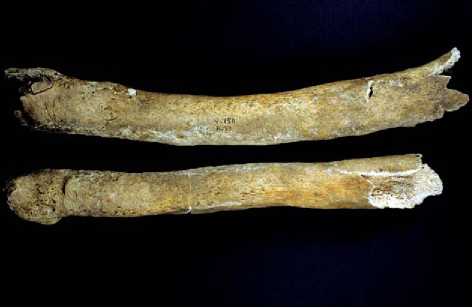
Figure 6 Anterior bowing and disfiguration of the tibias due to chronic periosteal reaction in a case of treponemal disease.
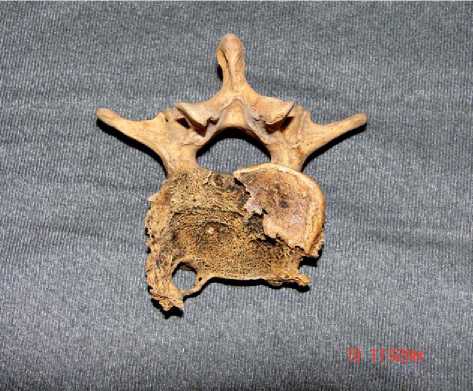
Figure 7 Destructive lesion of a lumbar vertebra in a probable case of skeletal tuberculosis.
The link in this increasing prevalence appears to be one of increased population density and sedentism, important demographic correlates of both agriculture and infectious disease.
The earliest cases of tuberculosis have been found in the Old World at sites in the Mediterranean and North Africa, where the domestication of herd animals such as cattle, a well known carrier of the pathogen, may have brought people into contact with the disease as early as 8000-9000 years ago. Early on, it was probably not crowding and sedentism that led to infection, but rather proximity to animal reservoirs of the disease. In the New World, the earliest, well documented cases of tuberculosis occur in South America, where the initial mode of transmission remains unclear, although domesticated camelids in some Andean regions may later have served as a reservoir for tuberculosis initially introduced by humans. However, the greatest visibility of tuberculosis in the New World is very late in the prehistoric sequence, much of it postdating AD 1000. An opportunistic infection, tuberculosis differentially affects those with compromised health and tends to thrive in crowded living conditions. Its apparent association with agriculture, especially well documented in North America, again may reflect the health risks that tend to occur when people become sedentary, increase in number, and live in closer proximity to one another.
Perhaps the most direct evidence for the impact of agriculture on infectious disease rates is the increase in dental caries rates noted above. The health consequences of dental disease are often underestimated due to modern perceptions of its minor impact on overall health relative to other diseases. However, in the absence of modern dental care, dental caries progresses from superficial tooth erosion to invasion of The dentin, death of the tooth, abscessing, and eventual tooth loss. This process is painful, produces a foul odor, and can be dangerous. The proximity of the teeth to major blood vessels connecting to the heart and brain means that bacteria can more readily be transmitted to these organs than from most other regions of the body. Once dental disease sets in, the pain and fragility of diseased teeth also limits a person’s diet to foods that require less chewing. When the teeth are gone, the diet is further restricted to foods such as gruels that lack essential nutrients and that can act as a medium for bacterial growth. Thus, the increased tooth decay and loss commonly seen in agriculturalist samples, particularly in the Americas, was likely associated with a decline in nutrition that rendered people more susceptible to infectious pathogens. In this way, dental disease likely played an important role in the patterns of morbidity and mortality we see archaeologically with the agricultural transition.




 World History
World History









